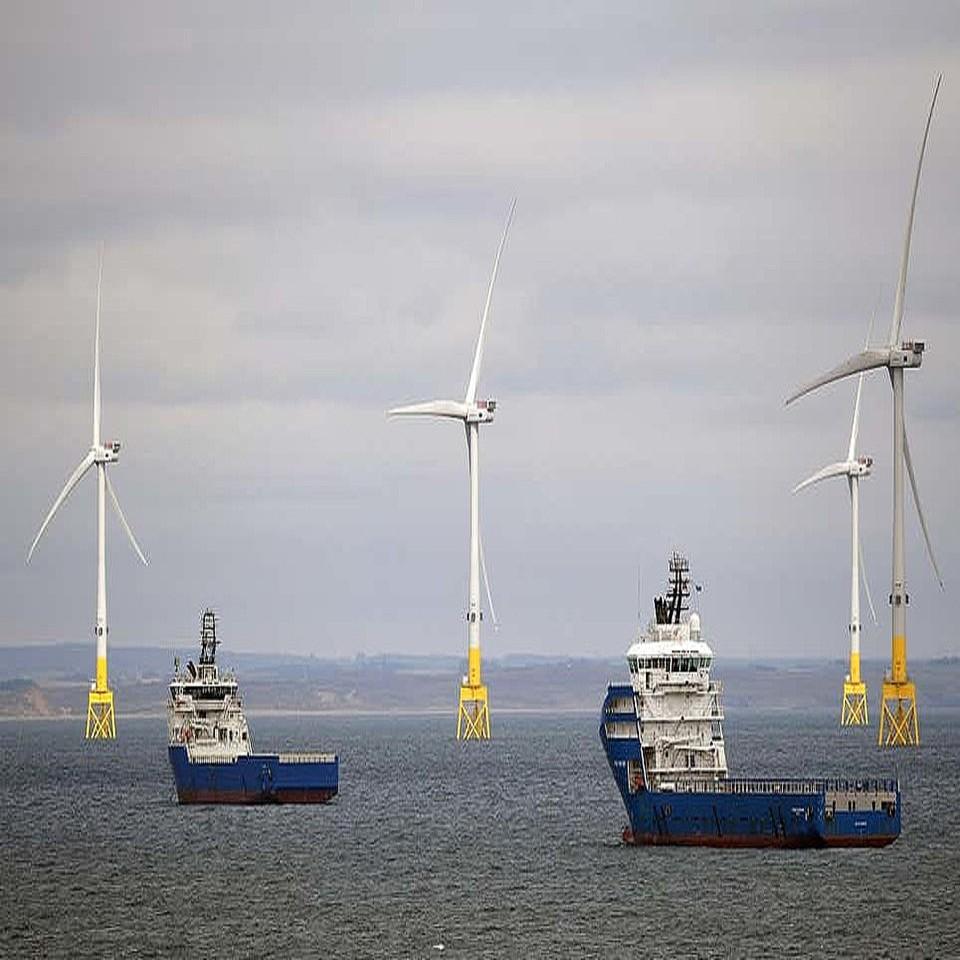California takes a step towards dev...
31
03
California takes a step towards developing a "floating offshore wind turbine"
The Biden administration recently announced plans to open an offshore wind farm off the coast of California. It seems that new technologies will be introduced in the plan.
"Today's announcement reflects months of active involvement and dedication with partners who are enthusiastic about advancing into the future of clean energy," Secretary of the Interior Deb Haaland said in a statement.
The plan will allow developers to install commercial-scale offshore wind farms in two locations, off Morro Bay in Central California and off Humboldt near the northern coast of the state. According to the administration, if the two locations are combined, it will be possible to generate enough electricity to cover 1.6 million households. The plan is surprisingly supported by the military, which used the California coast for experiments and military operations and previously rejected such plans. However, even if such a large barrier is removed, there are still physical difficulties in building an offshore wind farm in the Pacific Ocean.
"Floating wind turbine" that can obtain stable wind energy
Most offshore wind farms worldwide are built in shallow water so that turbines can be fixed to the ground with concrete or steel. However, the seafloor terrain on the west coast quickly becomes deeper, which is not possible with landing wind turbines. As a result, developers must come up with new ways to use wind as a power source there.

That's where the floating wind turbines, which are connected by cables instead of stakes, are introduced. Anchors that are lowered to the seabed can be reinforced with chains and weights to prevent them from being washed away. A statement issued by the White House stated that "new offshore wind power technology will be deployed in waters off California."
With this technology, developers will have access to faster and more stable wind energy than landing wind turbines. In addition, floating wind turbines may be able to increase the amount of wind power generated worldwide, as land-based wind turbines can capture only an estimated 40% of offshore wind resources.
This floating wind turbine is a relatively new technology, and the world's first floating offshore wind turbine just started generating electricity on the Scottish coast in late 2017. Since then, it has been implemented in more than 20 locations, but none has been operated in the United States or on a commercial scale. Maine developers are currently pushing the operation of floating offshore wind turbines, but they are struggling, so California may be the first to deploy this technology in the United States.
Liz Burdock, Chairman and CEO of The Business Network for Offshore Wind, said in a statement in an email: "Although global industry interest will be unprecedented, West Coast development is for engineering companies and skilled workers. We need American ingenuity and innovation in next-generation technology that creates opportunities for us. "
Is the Floating Offshore Wind Turbine Market Growing Rapidly?
Developers are ready for the future with floating wind turbines. In fact, it seems that several companies in the region have already shown interest. A coalition that includes Magellan Wind and Orsted North America is eager to build a turbine in the California waters. And Trident Winds and EnBW North America have proposed a 1000-megawatt floating offshore wind turbine near Morro Bay, but they are facing the same fishing opposition as what happened in Maine.
At a summit hosted by the Ministry of Energy, General Electric also announced that researchers are working on the concept of a 12-megawatt floating offshore wind turbine. If the company's models and simulations succeed in proofing the concept of the project, they may move on to build prototypes with their partners.
The floating offshore wind market is expected to grow rapidly in the coming years, and the Biden administration wants to support it. The White House wrote in a recent statement that the Ministry of Energy "has invested more than $ 100 million in research, development and demonstration of floating offshore wind turbines."
After the Marine Energy Administration officially reserves the waters off California for development and conducts an environmental analysis, it plans to auction the waters to developers in mid-2022. If this new technology is realized in the United States, California could become one of the world's largest wind farms, bringing the United States closer to the Biden administration's goal of achieving 100% zero carbon power by 2035. not.
Source: The Whitehouse, NREL, NYT, Fortune, Offshore Wind California, Castle Wind Offshore, Fisherynation.com, ARPA-E Energy Innovation Summit, Renewables Now, PRNewswire, the Bureau of Ocean Energy Management,








